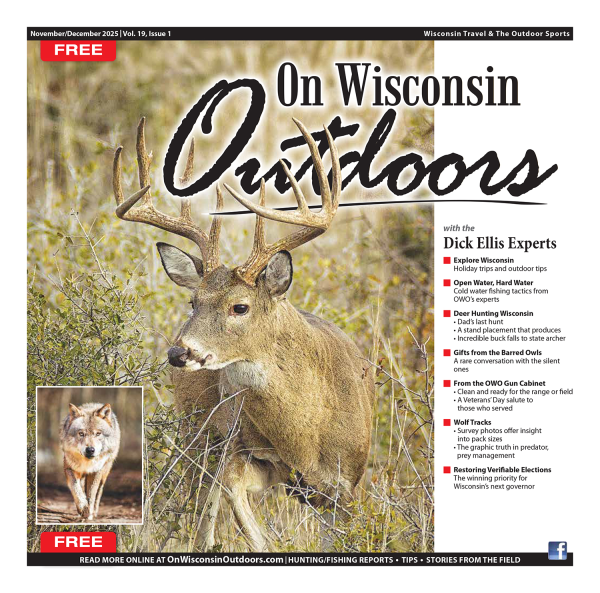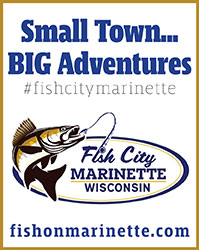Migrant Birds Carrying Colored Jewelry
April in Wisconsin means we will be seeing the first of many long distant bird migrants arriving, including purple martins and ospreys. They are the beginning of a massive wave of Neotropical migrants from Central or South America to reach our state for the future breeding season. In 2019, individuals of these two species will sport two types of bands for reporting if found across Wisconsin. Purple martins and ospreys will have the regular aluminum band issued by the Bird Banding Lab on one leg. On the opposite leg, almost 500 Purple Martins may contain a red band with white lettering sporting five digits and over 100 Osprey will sport many colors of which some may contain lettering. Dick Nikolai is carrying out research on distribution of Wisconsin born Purple Martin young at breeding colonies primarily in Wisconsin with distribution possibly in the surrounding Great Lakes Regional area. Wisconsin’s population has seen great declines over the past 50 years where almost the upper quarter of the state is devoid of nesting colonies. Patricia Fisher is the director of The Feather Bird Rehabilitation Center researching rehabbed osprey distribution, their survival and whether they are part of the reproduction scene within Wisconsin. Anyone seeing color banded Purple Martins or Ospreys or with plain aluminum, bands need to gather information off them and submit the information to the Bird Banding Lab (http://www.pwrc.usgs.gov/bbl/). Information needed is the color of the band, color of the lettering, details of the lettering on the color band (for instance--WI-243, white lettering on red) or from the aluminum band (for instance—2701-87438 aluminum band), which leg are bands found, whether the purple martin or osprey is alive or dead, date and the address where found. The same goes for other birds found by the public. The Bird Banding Lab with your information will notify Dick Nikolai, Patricia Fisher or other bander. They will follow up with other information desired.
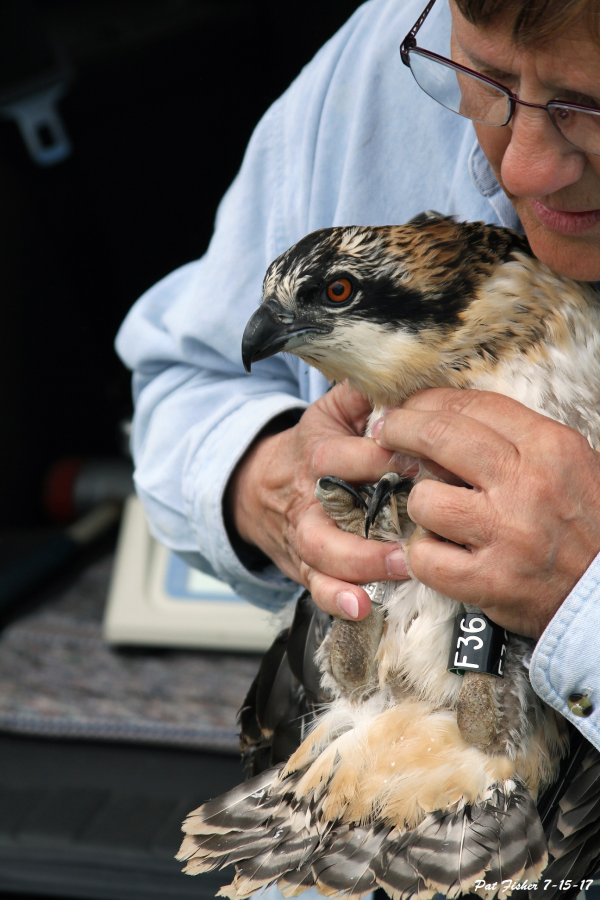
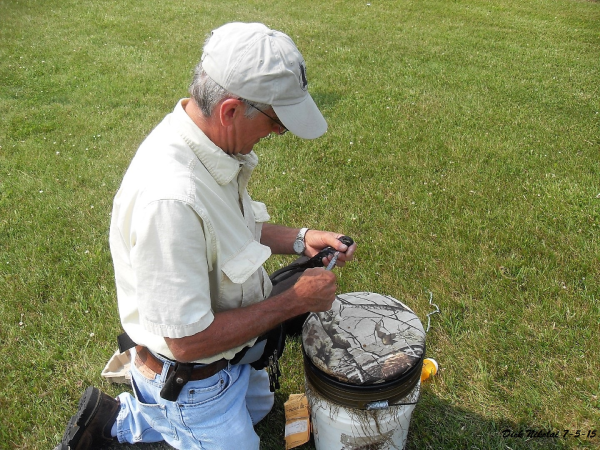
Purple martins are the largest member of the swallow family weighing a little over 2.25 ounces with an overall length of 7-8 inches and a wingspan of 15-16 inches. Martins are colonial nesting, raising a single brood per year laying up to eight eggs. They migrate nearly 10,000 miles yearly with an average adult life span of around 3-4 years. The oldest purple martin on record from banding was 13 years 9 months. Purple Martins begin arriving in early April where colonies have been established with successful breeding. Second year Purple Martins begin to arrive around May 7 and continue arriving until the end of June. Overall population estimates by the Partners in Flight for Wisconsin indicate about 30,000 purple martins exist within the state. Since 2013 in Wisconsin, purple martins are listed as aspecies of special concern. Annual surveys conducted for over 50 years (1966-2015) have shown purple martins have declined 6.84% per year in Wisconsin while declining 7.67% per year within the decade from 2005-2015. Simply stated, the annual 90+ route surveys in Wisconsin went from 591 in 1971 to 21 in 2015.
The Osprey or Fish Hawk is a large bird of prey (3.5 – 4 pounds, wingspan to 6 feet) which most often nests near water sources and specializes on a fish diet. Factors limiting the osprey population include the availability of nesting sites, significant depredation of both nestlings and adult ospreys by aggressive great horned owls and the growing competitive bald eagle population. Ospreys are also great distant migrators traveling to and from South America. Osprey fledglings complete these high-risk round-trip migrations around their second to third year to Wisconsin when they become adults ready for breeding. Today, more than 80 percent of the breeding pairs of ospreys use fabricated nest platforms, often placed on power transmission poles. Current population status is a “special concern” species in Wisconsin with 2018 population being around 600 pairs.
As we go through the 2019 breeding season, purple martins, ospreys and other migrants need your continued assistance for reports of bands throughout Wisconsin. Note the impact of our current April weather involving the winds, snow, cold and wet weather will have some adverse impacts on these and many of the migrants already in Wisconsin. They may be found in need of assistance so rehabilitees such as The Feather Bird Rehabilitation Center are important places to contact if sick or injured birds are found.
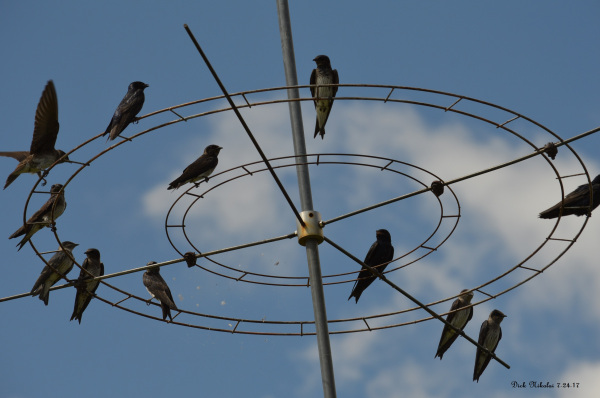
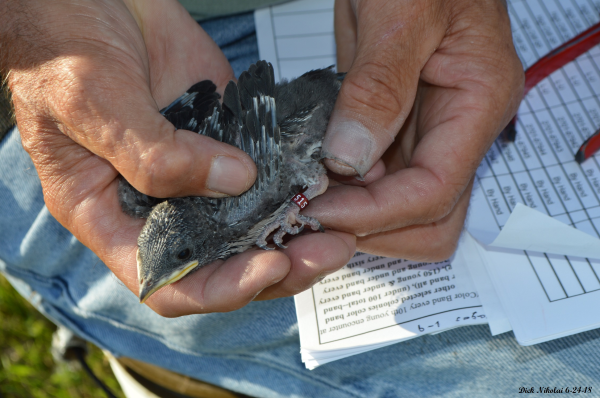
“Purple martins bring an intimate connection to backyard wildlife. Their dependence upon man creates a vulnerable predicament for us to maintain their future”, said Dick Nikolai a retired biologist with the state Department of Natural Resources. For further information, he can be contacted at prairiechicken@att.net or at 920-734-0828. Donations that are tax deductible for Nikolai’s research can be made at Madison Audubon (https://madisonaudubon.org/) under purple martin research.
“Rehabbing birds of prey to the wild, capture an immense sense of accomplishment and appreciation for these magnificent creatures”, said Patricia Fisher director of The Feather Bird Rehabilitation Center. She can be contacted at feather7@charter.net or at 920-982-6578. Donations that are tax deductible for Fisher’s research can be made at The Feather Bird Rehabilitation Center (https://www.facebook.com/The-Feather-Wildlife-RehabEducation-Center-147964821935787/).
